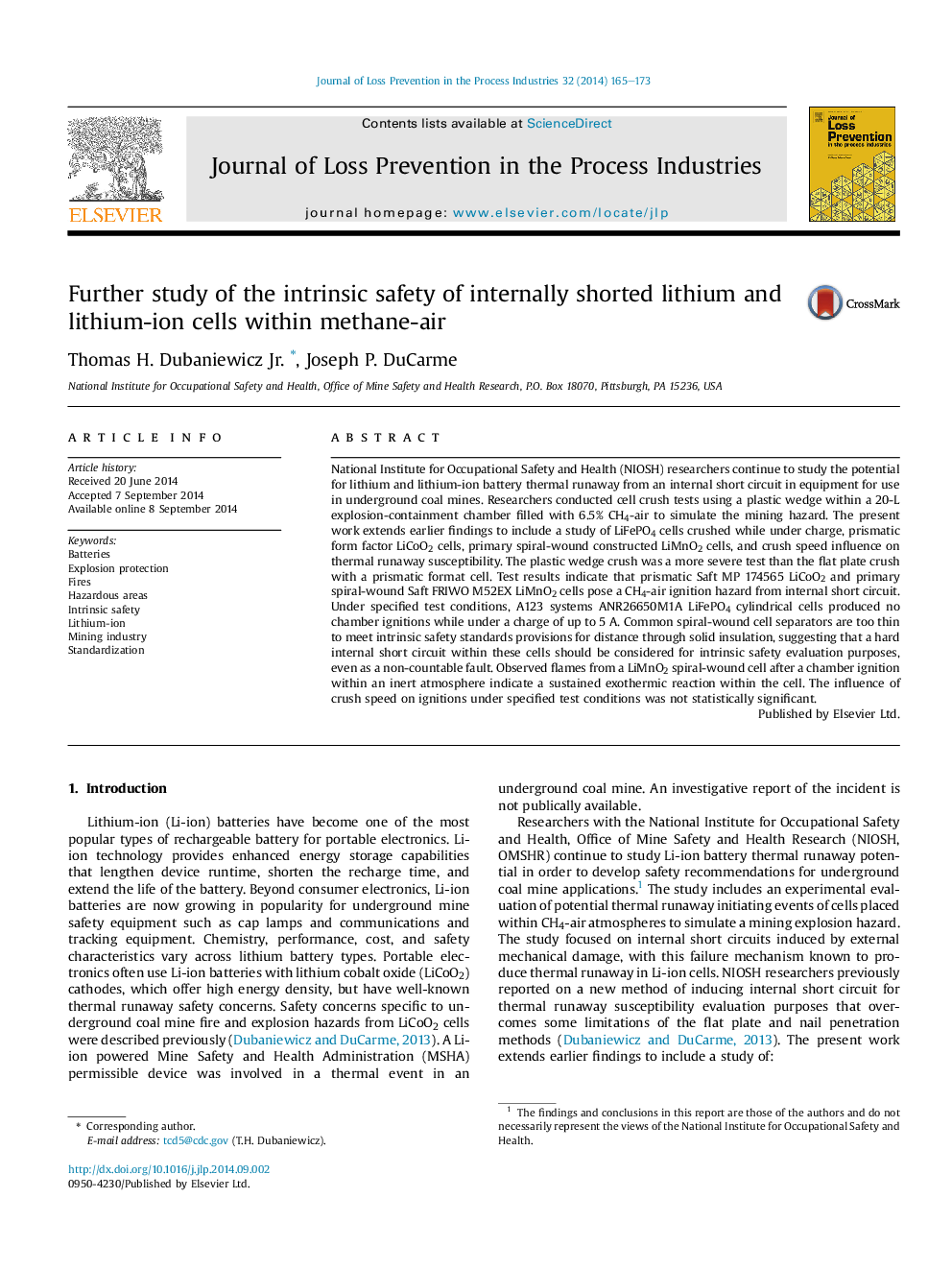| Article ID | Journal | Published Year | Pages | File Type |
|---|---|---|---|---|
| 6973498 | Journal of Loss Prevention in the Process Industries | 2014 | 9 Pages |
Abstract
National Institute for Occupational Safety and Health (NIOSH) researchers continue to study the potential for lithium and lithium-ion battery thermal runaway from an internal short circuit in equipment for use in underground coal mines. Researchers conducted cell crush tests using a plastic wedge within a 20-L explosion-containment chamber filled with 6.5% CH4-air to simulate the mining hazard. The present work extends earlier findings to include a study of LiFePO4 cells crushed while under charge, prismatic form factor LiCoO2 cells, primary spiral-wound constructed LiMnO2 cells, and crush speed influence on thermal runaway susceptibility. The plastic wedge crush was a more severe test than the flat plate crush with a prismatic format cell. Test results indicate that prismatic Saft MP 174565 LiCoO2 and primary spiral-wound Saft FRIWO M52EX LiMnO2 cells pose a CH4-air ignition hazard from internal short circuit. Under specified test conditions, A123 systems ANR26650M1A LiFePO4 cylindrical cells produced no chamber ignitions while under a charge of up to 5Â A. Common spiral-wound cell separators are too thin to meet intrinsic safety standards provisions for distance through solid insulation, suggesting that a hard internal short circuit within these cells should be considered for intrinsic safety evaluation purposes, even as a non-countable fault. Observed flames from a LiMnO2 spiral-wound cell after a chamber ignition within an inert atmosphere indicate a sustained exothermic reaction within the cell. The influence of crush speed on ignitions under specified test conditions was not statistically significant.
Keywords
Related Topics
Physical Sciences and Engineering
Chemical Engineering
Chemical Health and Safety
Authors
Thomas H. Jr., Joseph P. DuCarme,
